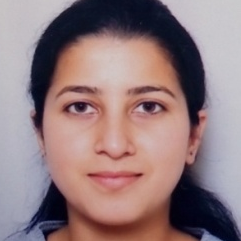International Journal of Computer Network and Information Security (IJCNIS)
IJCNIS Vol. 8, No. 12, 8 Dec. 2016
Cover page and Table of Contents: PDF (size: 689KB)
Delay Tolerant Networks: An Analysis of Routing Protocols with ONE Simulator
Full Text (PDF, 689KB), PP.51-58
Views: 0 Downloads: 0
Author(s)
Index Terms
Delay Tolerant Networks (DTNs), ONE simulator tool, Routing in DTN
Abstract
Delay/disruption Tolerant Networks (DTNs) provide connectivity in those networks which lack continuous connectivity or considerable delays like that of terrestrial mobile networks, military ad-hoc networks, sensor or planned network in space. They lack in an end-to-end path between Source and Destination resulting in long variable propagation delays. The Internet Protocols do not operate properly in these networks, thus raising a variety of new challenging problems in this area. The DTN effectively improves the network communications where the connectivity in the network is intermittent or is prone to disruptions. Routing in DTNs is challenging because of long and frequent time durations of non-connectivity. There are several routing approaches that have been proposed with strategies ranging from flooding to forwarding approaches. In this paper these protocols are analyzed based on the quantitative data gathered by simulating each protocol in ONE simulator environment. The performance is discussed and compared for different routing protocols and results are discussed for different performance metrics.
Cite This Paper
Richa Thakur, K.L. Bansal, "Delay Tolerant Networks: An Analysis of Routing Protocols with ONE Simulator", International Journal of Computer Network and Information Security(IJCNIS), Vol.8, No.12, pp.51-58, 2016. DOI:10.5815/ijcnis.2016.12.07
Reference
[1]Mobile phone users worldwide 2013-2019, http://www.statista.com, (retrieved July 20, 2016).
[2]Internet users in the world, http://www.internetlivestats.com, (retrieved July 20, 2016).
[3]World Internet Users-Internet World Stats, http://www.internetworldstats.com, (retrieved July 21, 2016).
[4]Billions of people in developing world still without Internet access, UN News Centre, http://www.un.org, (retrieved July 21, 2016).
[5]Cisco Systems Inc. Cisco Visual Networking Index: Global Mobile Data Traffic Forecast Update, 2010-2015. http://newsroom.cisco.com/dlls/ekits/Cisco_VNI_Global_Mobile_Data_Traffic_Forecast_ 2010_2015.pdf February 2011.
[6]E. P. C. Jones and P. A. S. Ward, “Routing Strategies for Delay-Tolerant Networks”, Submitted to Computer Communication, 2008.
[7]A. Vahdat and D. Becker, “Epidemic Routing for Partially Connected Ad Hoc Networks” Tech. rep. CS-200006, Duke University, Apr 2000.
[8]Ram Ramanathan et al., “Prioritized Epidemic Routing for Opportunistic Networks”, Proceedings of the 1st international MobiSys workshop, p 62-66, NY USA 2007.
[9]Teerapong Choksatid, Worrawat Narongkhachavana and Sumet Prabhavat, “An Efficient Spreading Epidemic Routing for Delay-Tolerant Network”, 13th IEEE Annual Consumer Communications & Networking Conference (CCNC), 2016.
[10]Bhed Bahadur Bista and Danda B. Rawat, “A Robust Energy- Efficient Epidemic Routing Protocol for Delay Tolerant Networks”, IEEE International Conference on Data Science and Data Intensive Systems, 2015.
[11]H. Bindra and A. L. Sangal, “Need of Removing Delivered Message Replica from Delay Tolerant Network- A Problem Definition”, MECS publisher, International Journal of Computer Network and Information Security, IJCNIS Vol. 4, No.12, November 2012.
[12]John Burgess et al., “MaxProp: Routing for Vehicle-based Disruption Tolerant Networks”, Proceedings of IEEE Infocom, 2006.
[13]Kevin Fall, "A delay-tolerant network architecture for challenged internets," 2003 Conference on Applications, Technologies, Architectures, and Protocols for Computer Communications, pp.27-34, 2003.
[14]Jian Shen, Sangman Moh, and Ilyong Chung, “Routing Protocols in Delay Tolerant Networks: A Comparative Survey”, The 23rd International Technical Conference on Circuits/Systems, Computers and Communications (ITC-CSCC 2008).
[15]Salman Ali, Junaid Qadir, Adeel Baig, “Routing Protocols in Delay Tolerant Networks – A Survey”, 6th International Conference on Emerging Technologies (ICET), 2010.
[16]Tamber Ambdelkader, Kshirasagar Naik, Amiya Nayak, Nishith Goel and Vineet Srivastava, “A Performance Comparison of Delay-Tolerant Network Routing Protocols”, IEEE Network, March/April 2016.
[17]Ahmad El Shoghri, Branislav Kusy, Raja Jurdak, Neil Bergmann, “Augur: A Delay Aware Forwarding Protocol for Delay-Tolerant Networks”, IEEE 11th International Conference on Wireless and Mobile Computing, Networking and Communications (WiMob), 2015.
[18]Michael F. Stewart, Rajgopal Kannan, Amit Dvir and Bhaskar Krishnamachari, “CASPaR: Congestion Avoidance Shortest Path Routing for Delay Tolerant Networks”, International Conference on Computing, Networking and Communications, Wireless Ad Hoc and Sensor Networks, 2016.
[19]Wei Sun et al., “On Delay-Tolerant Networking and its Applications”, International Conference on Computer Science and Information Technology (ICCSIT 2011).
[20]H. Chenji et al., “A Wireless Sensor, Ad-hoc and delay tolerant network system for disaster response”, Technical Report LENSS-09-02, Sept 2011.
[21]Vikram Jeet Singh et al., “Research on Application of Perceived QoS Guarantee through Infrastructure Specific Traffic Parameter Optimization”, I.J. Computer Network and Information Security, Feb 2014.
[22]Ziyi Lu and Jianhua Fan, “Delay/Disruption Tolerant Network and its Application in Military Communications”, International Conference on Computer Design And Appliations ICCDA 2010.
[23]Ari Kerane et al., “The ONE Simulator for DTN protocol evaluation”, 2nd International Conference on Simulation Tools and Techniques, 2009.
[24]E. P. C. Jones, L. Li, P. A. S. Ward, “Practical Routing in Delay-tolerant Networks”, Proc. of ACM SIGCOMM workshop on Delay-tolerant networking, pp. 237-243, Sep. 2006.
[25]S. Yamamura, A. Nagata, and M. Tsuru, "Store-carry-forward based networking infrastructure: vision and potential," 2011 Third International Conference on Intelligent Networking and Collaborative Systems (INCoS), pp.594-599, 2011.
[26]Jian Shen, Sangman Moh , and Ilyong Chung, “Routing Protocols in Delay Tolerant Networks: A Comparative Survey”, The 23rd International Technical Conference on Circuits/Systems, Computers and Communications ,ITC-CSCC 2008.
[27]Thrasyvoulos Spyropoulos, Konstantinos Psounis, Cauligi S. Raghavendra,” Spray and Wait: An Efficient Routing Scheme for Intermittently Connected Mobile Networks”, Proceedings of the ACM SIGCOMM Workshop on Delay-Tolerant Networking (WDTN’05), August 2005.
[28]Anders Lindgren et al. “Probabilistic Routing in Intermittently Connected Networks”, ACM SIGMOBILE Mobile Computing and Communications Review, Volume 7 Issue 3, July 2003.
[29]Project page of the ONE simulator, https://www.netlab.tkk.fi/tutkimus/dtn/theone.

